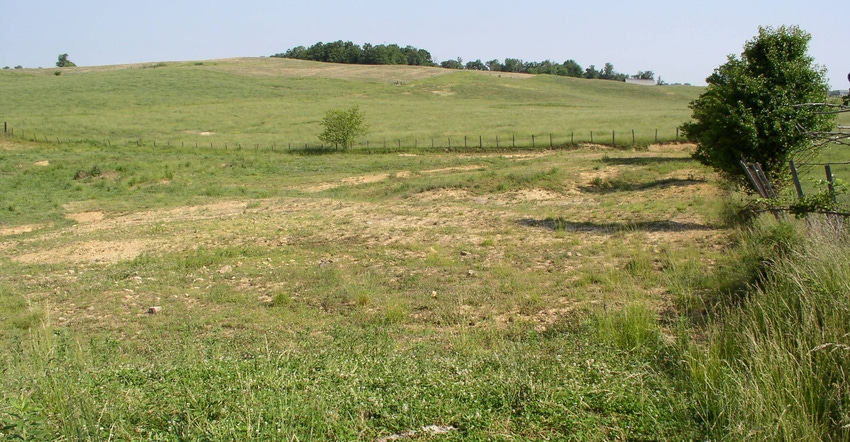
Most farms have at least one spot where soil erosion has won out over the years. Maybe it’s a small area that’s difficult to farm. Perhaps it has rocks or some other feature that makes it difficult to farm. The result may be an eroded spot that becomes an eyesore. Here’s proof that you don’t have to live with it.
Look at the 5-acre hog lot from days gone by in the “before” picture below. It was located on a farm in Dubois County, Ind. Hogs did a number on it over the years, keeping it rooted up and bare. It was the perfect target for heavy rains, resulting in severe soil erosion. Almost all the topsoil on this slope of 7% to 12% had washed away, leaving behind unsightly, unmanageable gullies.
Kris Vance, communication specialist with the Natural Resources Conservation Service in Indiana, says the landowner visited with local NRCS and soil and water conservation district personnel. The land is in the Ell Creek watershed, which was previously targeted for improvement under an Environmental Quality Incentives Program National Water Quality Initiative. That moved the site up on the priority list when the landowner applied for funding to do a series of practices under EQIP.
He couldn’t replace topsoil, but he could level gullies, remove trees and other obstacles to maintaining the land, and then seed the area to cover. It’s called a “critical area planting” in EQIP terms. Funding provided through the EQIP cost-share allowed the landowner to restore useful vegetation for grazing and control, and minimize future soil erosion that would have occurred on the site if it wasn’t addressed.
The continuous Conservation Reserve Program is on hold since the national CRP cap has been met. You can sign up, but your request goes on a waiting list. EQIP is still an option, however, Vance says. If you have a critical area you want to protect from further soil erosion, visit your NRCS office.
Below, on the left, is the badly eroded old hog lot, with virtually no topsoil left in areas with the worst gullies. On the right is the same area, but you may not recognize it. The facelift didn’t happen overnight. Move the bar in the center back and forth to see the difference.
About the Author(s)
You May Also Like




